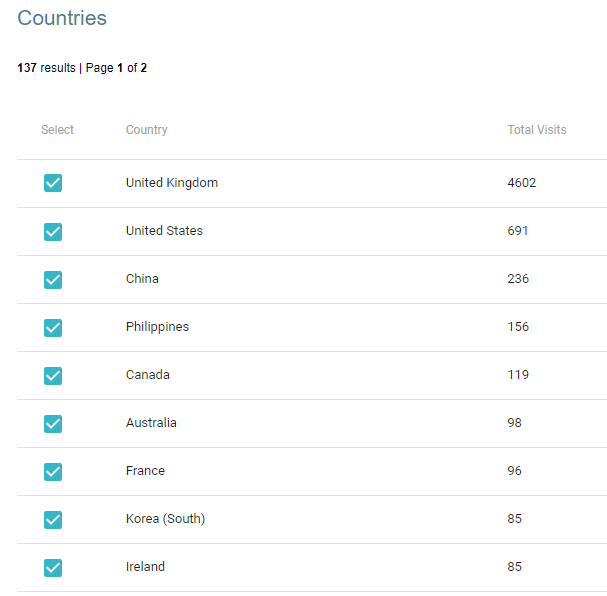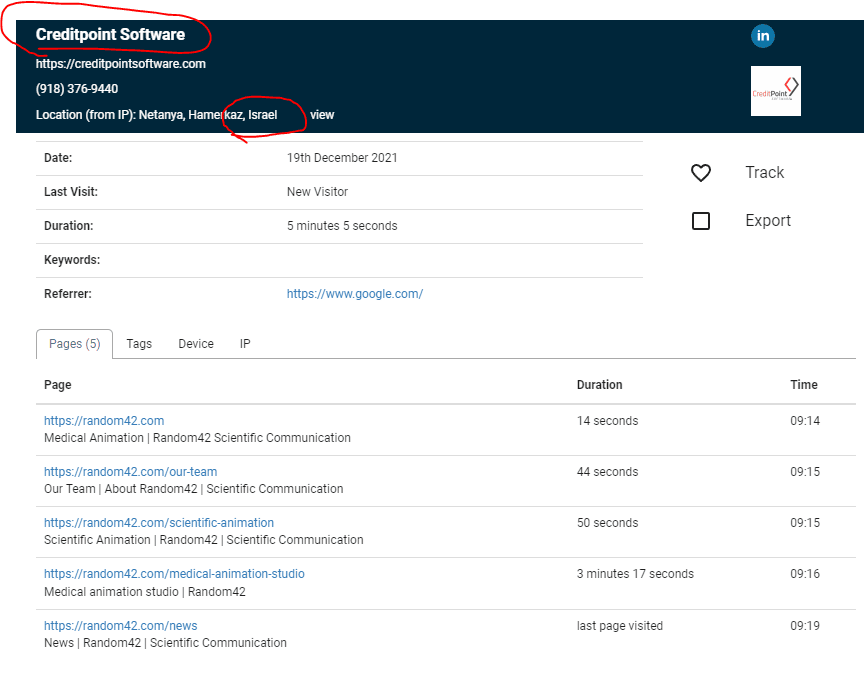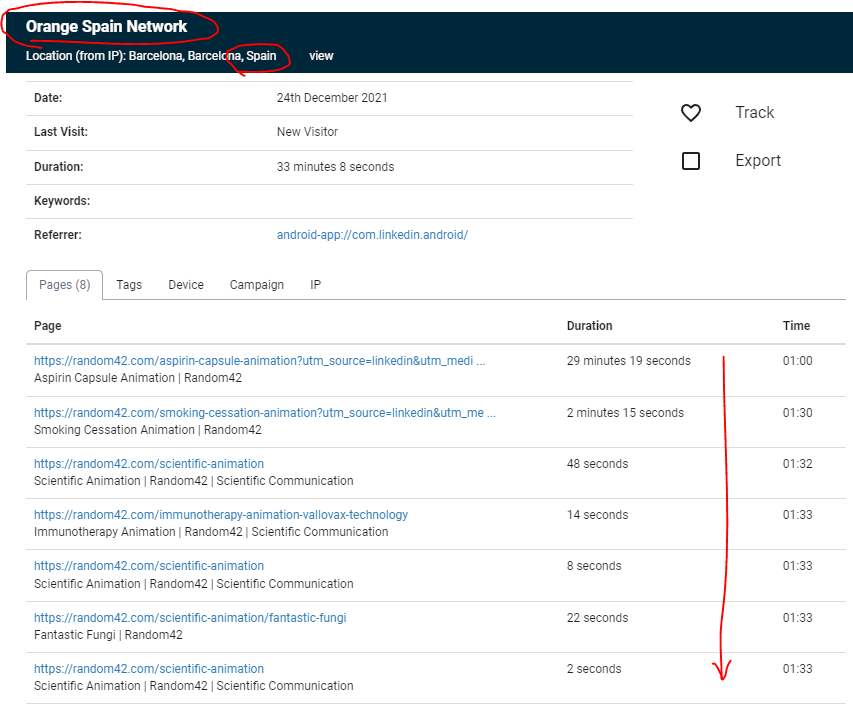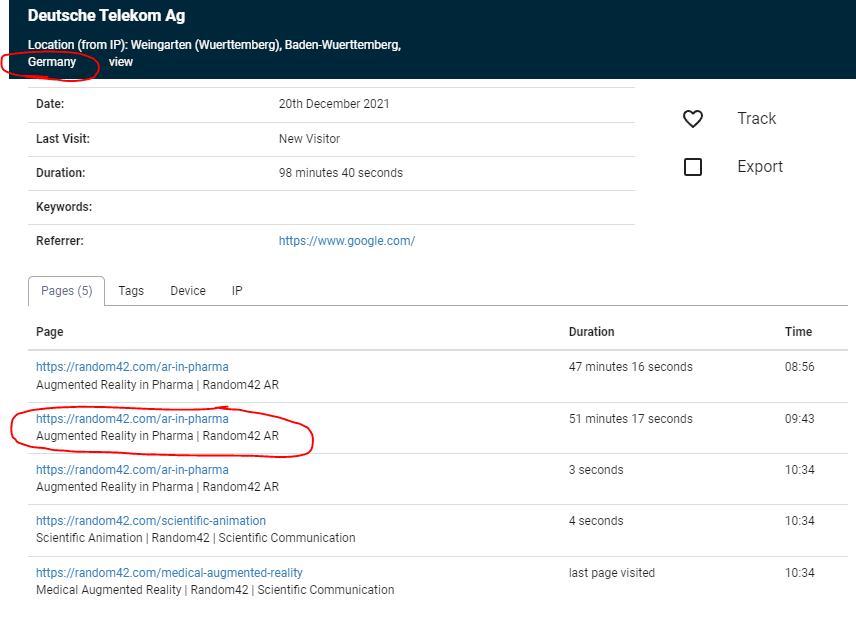
How to see website visitors from other countries and convert more of them to enquiries and sales
Whether you use Google Analytics or another system, you can get a basic view of how many website visitors you get from other countries.
Here, for example, is the simple view of visitors by country from our A1WebStats system:
That basic view can be expanded out to a more detailed view.
Here’s an example showing an identifiable company from Israel, who was one of many in that part of the world who looked at those types of website pages:
How to view visitors from other countries
Visitors from other countries will mean one of the following to you …
If you don’t sell to people from other countries, nor want to
These visits will be creating a false impression of how much useful website traffic you’re actually getting.
If, for example, you’re in the UK and sell only to the UK, you may believe that you have good website traffic of 1,000 visitors per month.
Then you discover (via analytics) that only 600 (60%) of your visitors were from the UK and the other 400 were from other countries.
That then gets you thinking about the need to be increasing your UK website traffic.
You may even, in some cases, decide to make your website invisible to people from some countries, so that you don’t get that ‘noise’ in your website visitors data.
Here at A1WebStats we took that action when we discovered a lot of traffic from one country that never became anything of value to us. So we completely blocked that country from seeing our website.
Your view of website success should always be comparing visitors from countries that you target to the levels of enquiries that you get (after making allowances for some visitors who will never be useful, such as a blog page that is attracting visitors but not the type of people who will convert to buyers).
If you sell to people from other countries
These could be potential customers visiting your website. Some of them may be identifiable by company name, as in the example further up this page.
The majority won’t be identifiable by company name but many are likely to be ‘company people’ who can’t be tracked (e.g. people working from home, using a mobile device, or from businesses that are not trackable via their IP address).
In this example below you can see a visitor from Spain who has looked at several pages of the website (implying that they are a ‘company’ type visitor) but there is no information about their company name – just their internet provider (Orange).
What this means is that there’s no opportunity to follow up with them.
However, there IS opportunity to make your website strong enough to encourage your international visitors to make contact with you …
Impressing website visitors from other countries
Here’s an executive summary of something discussed in great detail on our page https://a1webstats.com/knowledge-centre/website-analytics/international-targeting-why-you-could-be-losing-potential-sales-from-overseas-visitors-to-your-website/ …
- Visitors from other countries will be looking for specific services or products that you offer.
- The job of your website is to ensure that they get as far as those service or product pages and then to impress them enough to make contact with you.
- If those international visitors don’t see examples (typically: case studies) of how you’ve impressed your customers in their part of the world, then they won’t make contact with you.
- The vast majority of websites completely fail to adequately impress international visitors. In fact, we’ve still not found a perfect example, who we would showcase here if it existed.
If you want more enquiries from website visitors from other countries, here is your quick guide on how to do that (although you should spend time on the detailed version via the link above if you’re serious about improving enquiries from international visitors) …
Pick a country that has stronger traffic
In the example below, the company (from the UK, who already serves the UK and USA) has 444 visitors from Germany, but relatively few (73) visitors from Italy.
It wouldn’t make sense to focus attention on countries that don’t supply higher numbers of visitors to the website each month.
Focus on the countries that are more active.
Analyse what they looked at
The image below shows one of 119 visitors from Germany who got to a particular part of that website during a one month period:
If you have many international visitors getting to a certain website page then there’s an opportunity to impress them enough to make them get in contact.
Impressing the international visitors
On your product or service page create a map graphic demonstrating that you work with businesses worldwide.
When your visitors click on that graphic they go to a page that then lets them drill down into their part of the world.
Within that part of the world you include case studies related to customers in that part of the world.
Your potential customer will then see that you have experience impressing businesses in their part of the world and so are more likely to make contact with you.





Leave a Reply